Dear Living Poets and Lovers of Poetry,
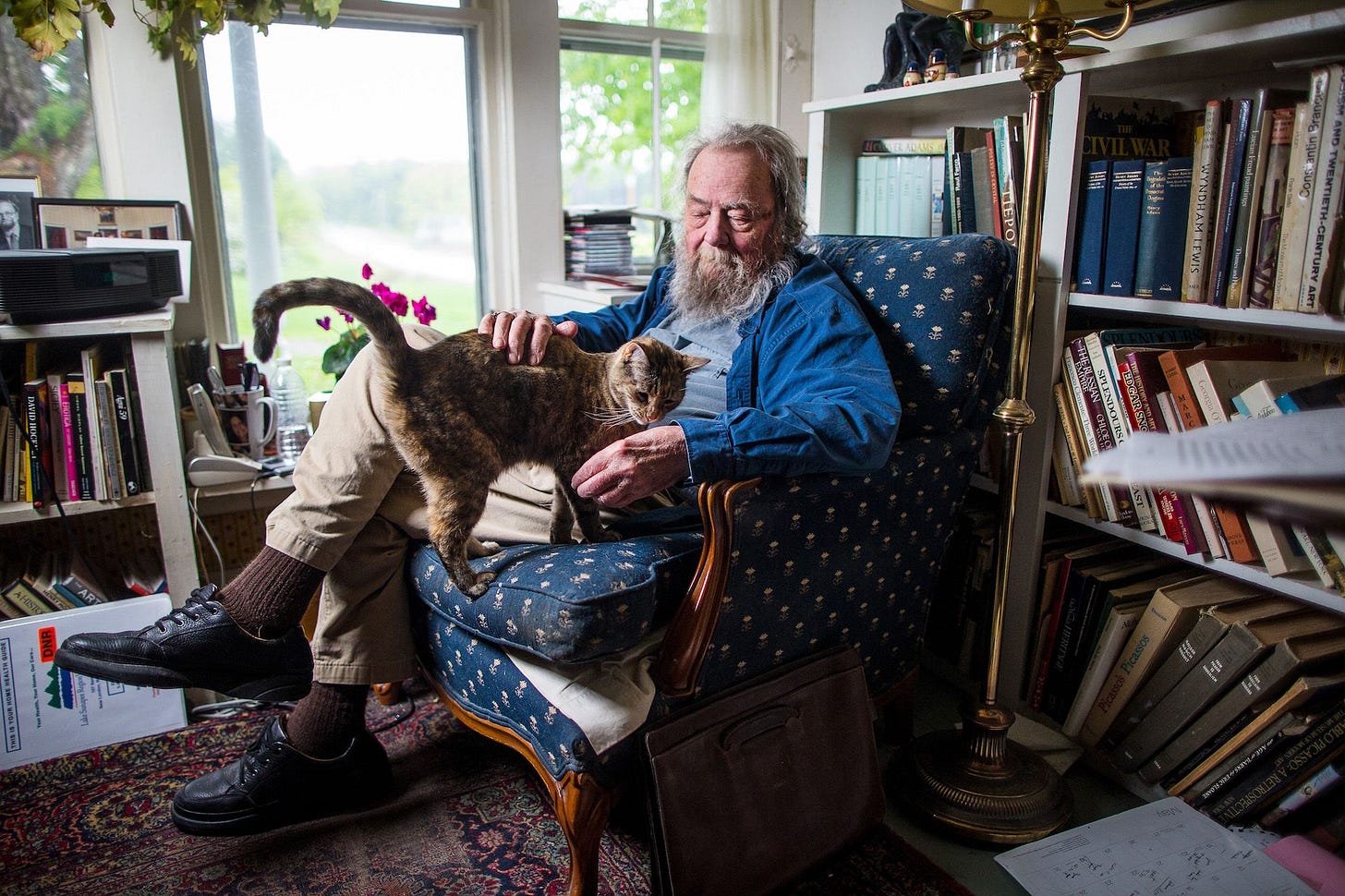
WELCOME to my quarterly rebrand of Secrets We Can’t Keep. Now that I’ve told you all my secrets (shhh) I am turning my attention to a seasonal newsletter inspired by Donald Hall’s Life Work. Poets Living comes out of my love for how poets live and my wish to better jot down things I do or love.
Here is Donald Hall from Life Work:
“If work is no antidote to death, nor a denial of it, death is a powerful stimulus to work. Get done what you can.”
Here is a great poem by Hall’s beloved, the poet Jane Kenyon, capturing how they lived together in their New Hampshire farmhouse, from her perspective. I also love this piece about his life after Kenyon died and this one reflecting on a life well-lived by art critic Schjeldahl, too, as he faced mortality.
Life is a poem. Our days are poems. We rove and repeat ourselves in mundane rituals—can we we really separate our aesthetics from our living rhythms? Even the most reclusive Dickinson spent so much time baking and tending to plants . At a time when poems themselves don’t often make a living, let’s shed some light, some slants of light, on poets doing their life work around and off the page: gardening, walking, praying, getting groceries, and making to do lists. The poetry of living, inspired by the poets themselves.
A haiku has 17 syllables, a sonnet 14 lines. While poems require great thought and patience, how do poets fill in the rest of their time, away from their desks? Beyond the great dramas of our lives, poetry comes from the daily tasks, weeding the garden, taking out the trash, driving in traffic, childcare, talking a stroll. It is often these repetitive acts that yield direct inspiration, offering time constraints, structures, and rhythms that function like living poetic forms. It is these beautiful, ugly, surprising, and often boring habits that we might overlook as valuable sources of our language. This newsletter is devoted to the details and daily lives of poets as a poetic form itself.
Seasonally or so, I will use the list form to share some tidbits, travels, anecdotes, book recs, outings, experiences, reflections, or photographs of places poets spent their time or unlikely places I’ve discovered poetry, and end with what I will call a “Read-to-Write” invitation or provocation for your own Life Work.
Whether you are a poet or not, we can all afford to appreciate the everyday a bit more, even on the darkest days. Comment with your own lists or reflections, and share these with someone who needs the act of buying Bounty paper towels to feel a little more beautiful. If you need a soundtrack for this list I recommend The Smiths Cemetery Gates, which I’ve just discovered. “Oh Keats and Yeats are on your side!”
30ish Things from Spring (& a bit before):
“The erotic is a measure between the beginnings of our sense of self and the chaos of our strongest feelings" writes Audre Lorde in The Uses of The Erotic, which I’ve been teaching this spring at 92NY to my poetry workshop. It’s worth listening to her deliver the talk herself. Along with this recent Ama Codjoe poem-a-day selected by Omotara James, Lorde sets the life force tone here. By the way, “Audre Lorde” was in a NYT Crossword the other day. The clue was “The Black Unicorn poet?”
Speaking of teaching, I visited my (spirit) teacher Lucie Brock-Broido at Mount Auburn Cemetery on her birthday, May 22nd. Here’s the poem her epitaph comes from A Meadow
This umbrella, which I bought for the cemetery mid-Nor’easter, captures the spirit of Harold and Maude, a lovely film of unlikely love but also finding a way to live fully next to death.
Using the Locate a Grave feature on the Mount Auburn website, I also found the grave of Helen Vendler, one of my favorite poetry critics of my lifetime. I believe the cemetery has artist-in-residence programs that emphasize work that engages death as part of life.
Vendler must have spent a lot of time in the Keats room and Dickinson room (see below) at the Houghton Library at Harvard. I appreciate that Vendler didn’t really love Dickinson most of her life and then wrote a definitive book of close readings on Dickinson near the end of her life. I have heard that she told her students that memorizing poetry was good preparation for one’s death bed, something to do, something like that. I thought of this when I read Garth Greenwell’s Small Rain and the narrator goes over Keats’ “Ode on a Grecian Urn” in his head while bedbound in the hospital. In addition to all Dickinson herself read in her lifetime (e.g. Keats, the bible, Dante, etc.) she could see a cemetery from her window. Poet Mark Strand once said, in a class he co-taught with Timothy Donnelly, that funerals were Dickinson’s television. I love the one to one ratio of Dickinson’s chair/body to desk/page. Suits her vs. Longfellow’s or Melville’s desks which were vast.
The Grolier, the nation’s oldest poetry bookstore, is a perfect example of living poetry in Cambridge, wonderfully run and curated by James Fraser. The real deal. One of my favorite things to do at the Grolier is move my eye between the spines of books and the photos of local poets on the wall, including Lucie. I picked up a collection of Lucille Clifton’s poems to take on the road.
Here is a great sketch of Emily Dickinson Lucie gave me before she died, a gift to her from Heaney and Vendler. What a lineage to see in her face when I write—no pressure! I sent this photo as a thank you to the brilliant librarian (Christine Jacobson) who showed me around.
Christine sent back the artist Jack Coughlin’s website! I hadn’t realized he did several literary portraits. One of the best, I agree with her, is this one of Seamus Heaney.
Here is Sylvia Plath’s manuscript page of “Sick Room Tulips” at the Houghton on the back of Smith College pink paper. Makes me think of Dickinson’s use of envelopes, David Lynch using diner napkins, and AR Ammons Tape for the Turn of the Year. What everyday materials will you write on?
Oh and here is Ashbery’s typewriter from The Woodberry Poetry Room in the Fall. You can try it:
This is The Star Market in Porter Square, where poet Askold Melnyczuk last spotted Lucie Brock-Broido near midnight buying paper towels before she died. He discussed this in his eulogy for Lucie at the Story Chapel. This year’s Pultizer-Prize winning poet Marie Howe responds to the same Star Market in a New Yorker poem). What market could be more magical and mundane?
Here’s a wonderful discussion with Marie Howe and Kevin Young about Lucie Brock-Broido and their time in Cambridge after graduate school at Columbia. They both studied with Stanley Kuniz whose poem is below. And Louis Gluck studied with him too and writes about that in Proofs and Theories!
Sugar Bombs are the specific tomato Louise Gluck asked my friend to pick up for her at the Berkeley Bowl. Something like: If they don’t have them, bring nothing. This detail has stayed with me so it made sense that I first discovered them myself at the Star Market, near where Louise lived in Cambridge. I decided to make salad and pasta with them. Made me think of her poem “Snowdrops”
McLean is an important pyschiatric institution near Boston, where many poets (throughout history) have spent time, including Sylvia Plath (see The Bell Jar), Robert Lowell etc. Walking the grounds, seeing the old chapel she would have passed, and an angry mother goose guarding her nest made me so appreciative for the poetry that has come out of experiences of great mental healthcare as much as mental suffering. I think it’s probably the hospital behind the one in Girl, Interrupted, too, but not sure that is confirmed. On this topic of poets, madness/mental illness, I’ve read some great books by Kay Redfield Jamison such as Touched with Fire and Night Falls Fast. I hope to start reading her book on Lowell soon!
On the note of Lowell, I highly recommend Sarah Ruhl’s play Dear Elizabeth which was read virtually in a pandemic production with Meryl Streep as Bishop. It is based on Bishop and Lowell’s letters!
I read a biography of Leonora Carrington and then saw her first big New England Show at the Rose Art Museum at Brandeis. I loved this anecdote of the nun saying at school “always trying to be different” or something along those lines because she had her shoes on the wrong feet. That worked its way into a new poem I’m writing. Two other good bios recently read are on Hilma af Klint whose show on flowers is at MoMa now. Also Joseph Cornell’s. He even responded to Dickinson’s poems, himself reclusive, and had an unlikely friendship/relationship with artist Yayoi Kusama.
I read some of Max Ritvo’s poems and my own poems for him and about my son (thanks to his mother Ariella Ritvo-Slifka’s invitation along with the Child Study Center) at Yale where Max went to college. The talk was called “Not Quite Together Forever: Poetry, Friendship, and Parenting at the Edge of Intimacy and Mental Health.” It was a powerful experience for me. It was graduation weekend, and I wandered the campus imagining Max in college right before I met him in Dorothea Lasky’s workshop at Columbia.
14. I ate some New Haven pizza (almost tried clam pizza, next time!) after seeing the amazing Turner (see his last sketchbook) and Tracey Emin shows at the recently opened British Museum and thought about Connecticut poets such as Wallace Stevens who spent his days working at Hartford Accident and Indemnity nearby, Merrill in Stonington doing Ouija, and Gluck teaching her workshop at Yale, Max’s “master” there. Louise edited Max’s posthumous collection The Final Voicemails (Milkweed), which collects together his last poems and his college thesis Mammals.
Back to Cambridge, my favorite coffee shop is Faro Cafe, a Thoreau-themed cafe. Not too far from Walden (see below), cabin not pictured.
On the way up the coast of Maine, stopped at the public library in Waldoboro, Maine where Robert Creeley lived. Though we couldn’t track down his exact address, I found out that he had been at Brown just two years before I was there. If only! Another cool poetry festival in Camden, Maine up the coast with Jane Hirshfield, and poems by students written on the shop windows!
Here are two New England poet homes in Cambridge and Amherst: Longfellow’s and Emily Dickinson’s.
Still want to make it to Melville’s Arrowhead, TS Eliot’s Gloucester retreat, Merrill’s house in Stonington, Frost’s house and The Ruth Stone House in Vermont, and Donald Hall and Jane Kenyon’s New Hampshire farm house of course. For now, a trip to LL Bean will have to do. I admired the Plaza of the Boot and tried on a windbreaker (what do you think?), ended up buying a few souvenirs for my kids instead, including an incense burning log cabin like Lucie had. The salespeople were shocked that I wasn’t in the computer system. “You mean you’ve never shopped at Bean?”
Here’s a view of Penobscot Bay nearish to where Elizabeth Bishop and Robert Lowell spent their summers and where his poem dedicated to Bishop (“Skunk Hour”) takes place. She took a ferry from around here (near Rockland) to North Haven. There’s a good article about Bishop’s Maine in LARB. Same Midcoast region David Foster Wallace writes about in Consider the Lobster. I also thought about Olive Kitteridge and the amazing miniseries with Frances McDormand.
Before bed I’ve been reading Reveries of the Solitary Walker by Jean-Jaques Rousseau. It’s amazing how just taking a walk can create a whole chapter of reflection on one’s life. (Kind of hard to believe his work on childhood when he actually had five children with his same mistress and apparently left in the orphanage.) Here are three poems to reread about life and the possibility of changing by Stanley Kunitz, Rilke and James Wright. Note how ordinary outward observations of a statue or from a hammock lead to such transcendent reflections, changed perspectives on one’s own life.
One of my favorite local Cambridge/Waltham poets is Franz Wright. In Two Years with Franz, a radio program that incorporates his tape recordings from the last few years of his life (daily street-crossings, mutterings, laughing with his wife, noises of composing poems not unlike the sounds Glenn Gould famously makes in his late recording of Bach’s Goldberg Variations) Wright talks about sitting in the back of Catholic Churches when he was struggling with mental illness. I’ve been thinking of this while visiting a few churches, including a chapel from a Franciscan Monastery near Congdon’s Donuts (also a landmark to me!) and a basilica in Lewiston, Maine. Check out Kaveh Akbar’s Divedapper interview with Franz Wright (addiction and spirituality etc.) shortly before he died.
More Massachusetts from another season: Mass Moca, James Turrell, poet of light, making art in an existing structure, with a hole for the sky you watch dusk through, and the contextual changes of light change the color you perceive in the sky:
Nearby the incredible Bookmill
Frank Bidart, another Cambridge poet, in The Harvard Advocate when he turned 80 on being mentored by Lowell, teaching, coming out to Bishop, and wanting to direct films among other things.
This spring in LA, I went to the Walt Disney Hall for the first time to see a concert with my co-editor Callie Siskel. Max Richter played The Blue Notebooks inspired by Kafka’s The Blue Octavo Notebooks (which Lucie Brock-Broido introduced me to!). On the Richter recording, Tilda Swinton reads the words. Fun fact: I used “Dread of night. Dread of not-night” from Kafka’s Blue Notebook as an epigraph for my chapbook Bed.
Loved this London Review of Books essay by Anne Carson on having a degenerative disease, boxing, handwriting etc. I couldn’t help thinking of her own book and titular essay “Decreation” on the mystical concept of creation through negation (Sappho, Porete, Weil) and how this relates to the idea of being diagnosed with the word “degenerative” which I have also experienced.
I attended the opening of Alystyre Julian’s film Outrider about Anne Waldman’s life and the Poetry Project, Naropa, etc. at Anthology Film Archive
Earlier this year, the magnificent poet Dorothea Lasky and I went to an Isadora Duncan/Batsheva collab in New York and danced with scarves ourselves. Duncan died because her scarf got caught in the car’s wheel when it drove off. Horrifying. Both Plath and Brock-Broido have poems that reference her! See this PROMPT here and follow PROMPT (Dorothea Lasky’s and my substack…we have some inspired surprises coming soon!)
On the poetry of daily life, this past winter, I was astonished by this museum in Vermont (Northeast Kingdom) in a barn. I was the last visitor of the year, stepping out as the sun went down on New Year’s Eve. before it closes until spring!
Not far away is Goddard College, where Louise Gluck had her breakthrough on her second book after a long period of writer’s block (she writes about this in Proofs and Theories, mentioned above). She taught there for a long time, and I often think of her poem “A Village Life” as written about her time in this rural part of Vermont, the local farmer’s market etc. It looks like Goddard has now been sold and won’t function as a college anymore, sadly. If in Vermont, check out the poetry and puppet theatre of political resistance and stunning solstice celebrations at Bread and Puppet on a farm in Glover. Jean Valentine used to pass along beautiful erasure collages made by Mary Ruefle (Vermont poet!) as well as Bread and Puppet Emily Dickinson calendar art which I still have from the year of 2016, when Max Ritvo died and she was keeping in touch with us across the country.
Back to spring, I was part of a wonderful reading at Plant Material in Silverlake hosted by writer Melissa Seley (see below), with the theme “Mock Orange” inspired by Louise Gluck of course. But first a return to Dickinson’s Herbarium (people sent her plant specimens from all over the globe) in addition to what she tended herself in the hothouse and garden.
Here is the hat my friend Elsinore loaned Max Ritvo when he officiated my wedding and which she offered me to keep years later as a special gift. I recently gave it to his mom on a visit to his home before I leave LA. I also reread an incredible letter that Tom Waits wrote him after a 1.5 hour phone call they had before he died. In the letter he writes “What is a clear metaphor…is it something you can see through?” In my first book, dedicated to Max, the proem ends “asking how I know it is a star/ given its clarity.” So we were all asking Max to clarify clarity I guess. Waits recommended this book by a writer who died young (suicide). Check out Max’s first book Four Reincarnations which Waits blurbed…a poem itself!
Alice Notley’s obit in the NY Times is beautiful, and I had just reread Descent of Allette the month before while teaching a class called “Unlikely Lucie” in which I paired Brock-Broido poems with other poets and hybrid-texts. Allete’s is a radical feminist underworld of the subway system. It begins like the Inferno, "One day, I awoke & found myself on a subway, endlessly." I’ll be riding the hot summer subway again before long and never thought I’d be nostalgic for it. Does anyone know which train line Notley might have ridden most frequently when she wrote this?
Poets House just held its annual Brooklyn Bridge Walk with Gabrielle Calvocoressi, Rita Dove, Adrian Matejka and others (right around Whitman’s birthday and of course the bridge is a great poetic subject for Hart Crane, Marianne Moore etc.) and I am eager to be in Brooklyn before long! There are traditions of poetry everywhere and your everyday routines are waiting, holding out all the poems you have not yet written. Not only will they offer inspiration for your poems, but your poems will immortalize them and make them shinier to all of us who come after, passing through. May the life work of poetry continue there and wherever you find yourself!
Summer Read to Write: Take a book of poems with you to an unexpected location. From wherever you read the book, pause intermittently and meditate on every element (earth, fire, water, air) and translate one random line from your book into the language of your element. Do the same with your past, present, and future. This is an exercise in translating time and place, in this case not from your life into language, but from language into your life. Use your 8 lines to write a poem of 16 lines. You might end by addressing your life or self in the second person and how you might change or embrace it.
I welcome comments below, such as your own favorite daily routines or places you visit in an everyday way that make you feel more alive or make you feel closer to other poets who have lived!
Until next season,
Elizabeth
P.S. I’ll try to post classes and readings I’m offering here as well, but for now, you can keep an eye out for my online poetry workshop this Fall with 92NY and other offerings via Poets & Writers etc.!




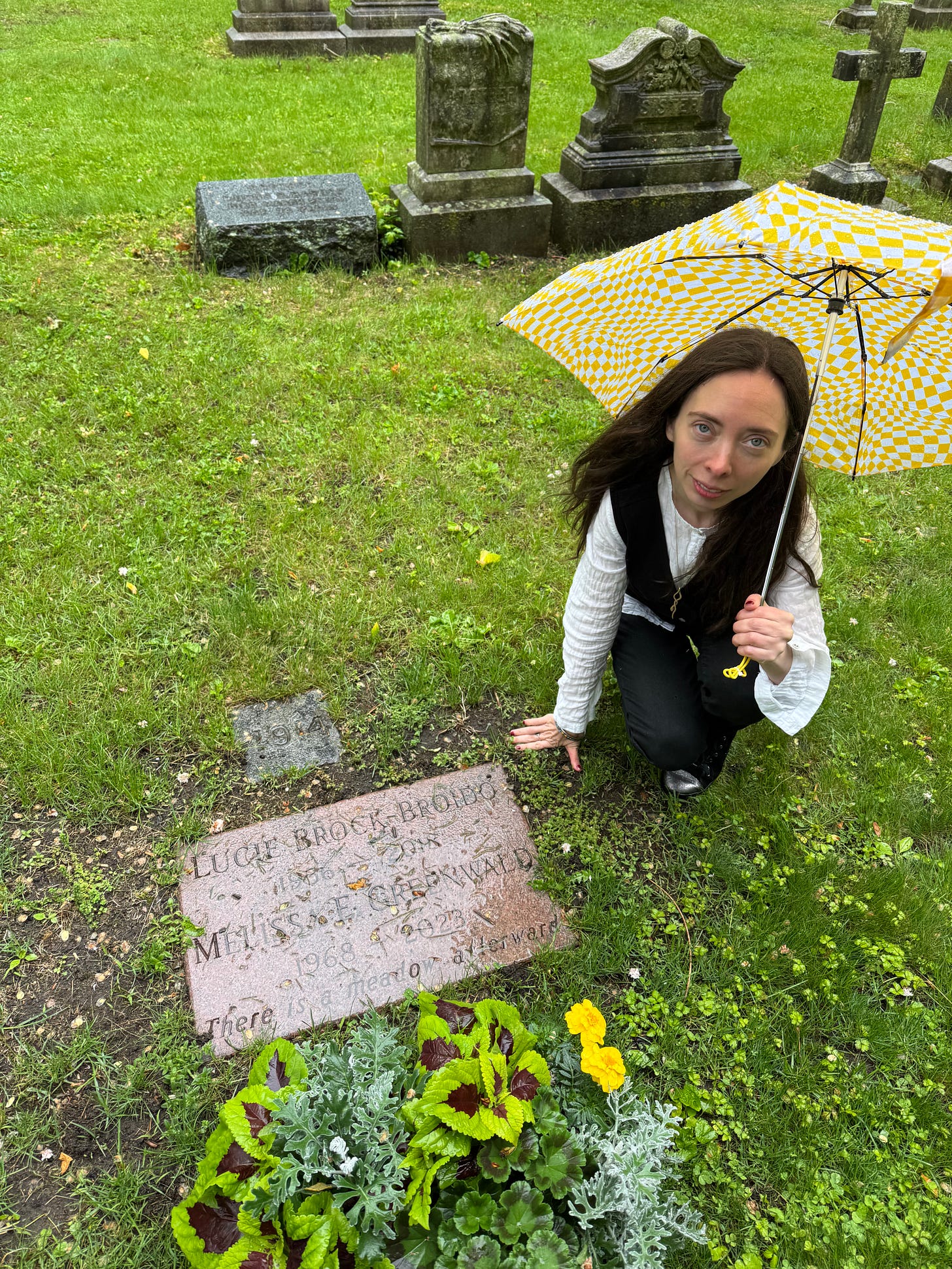

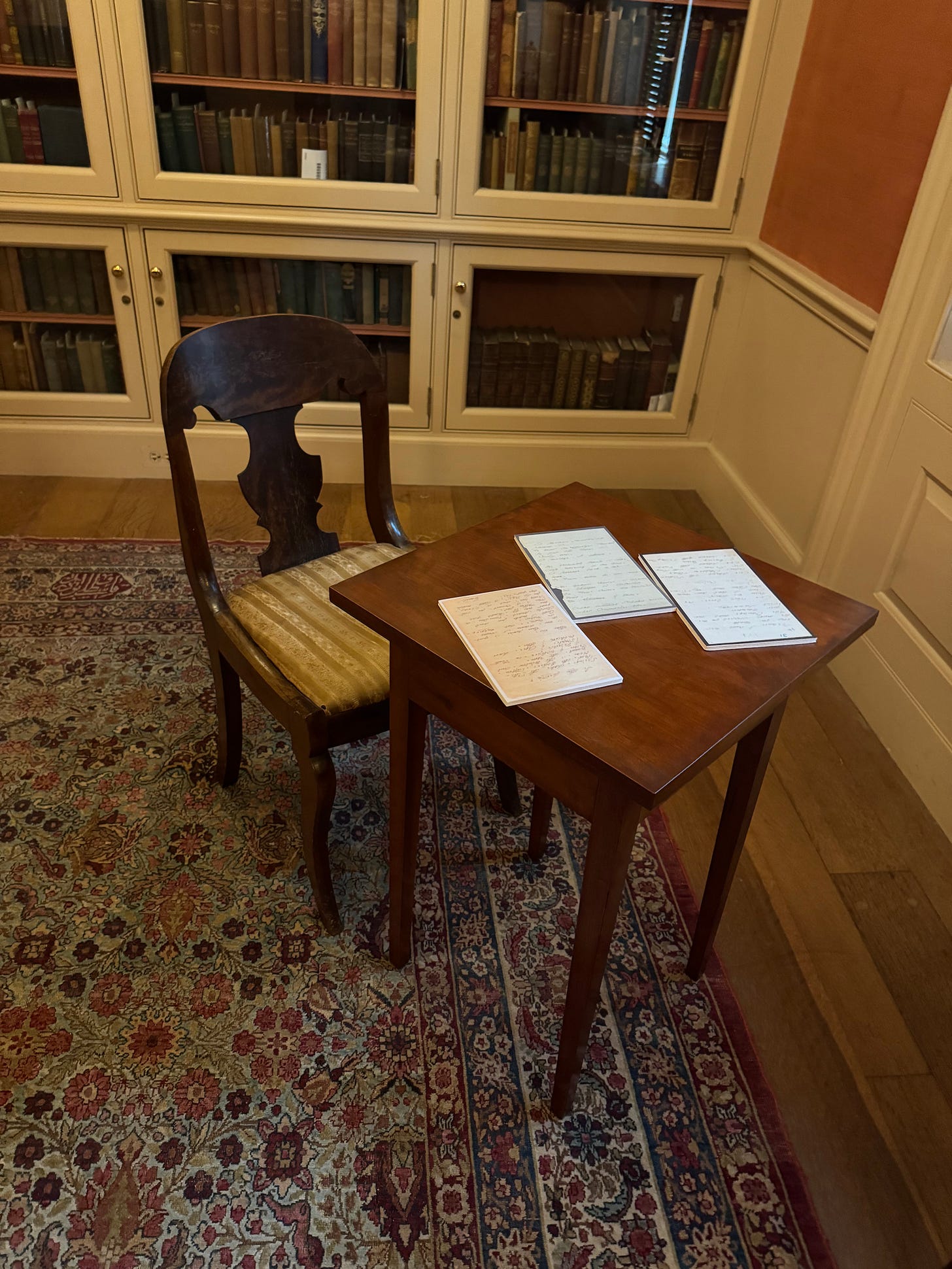
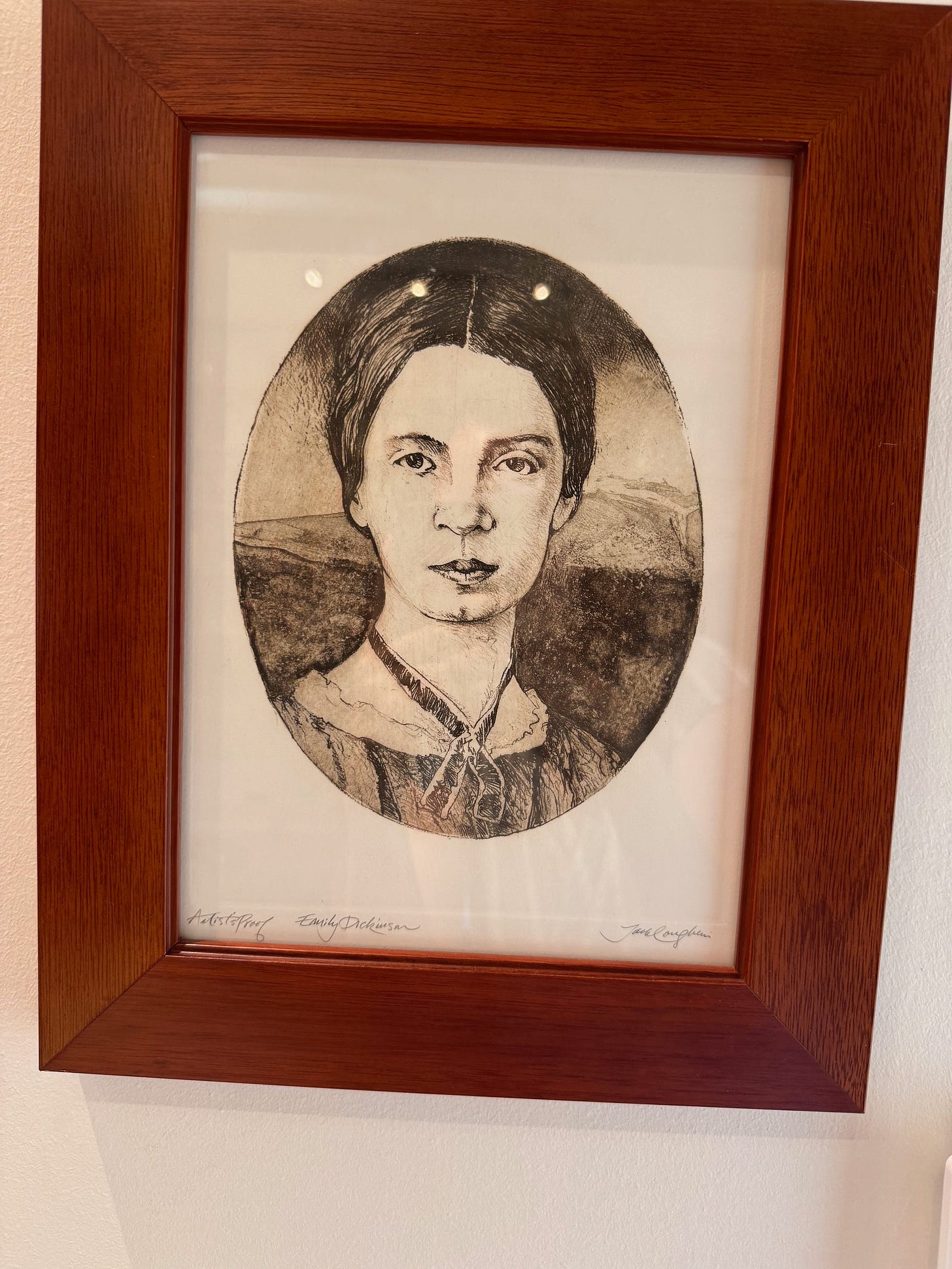
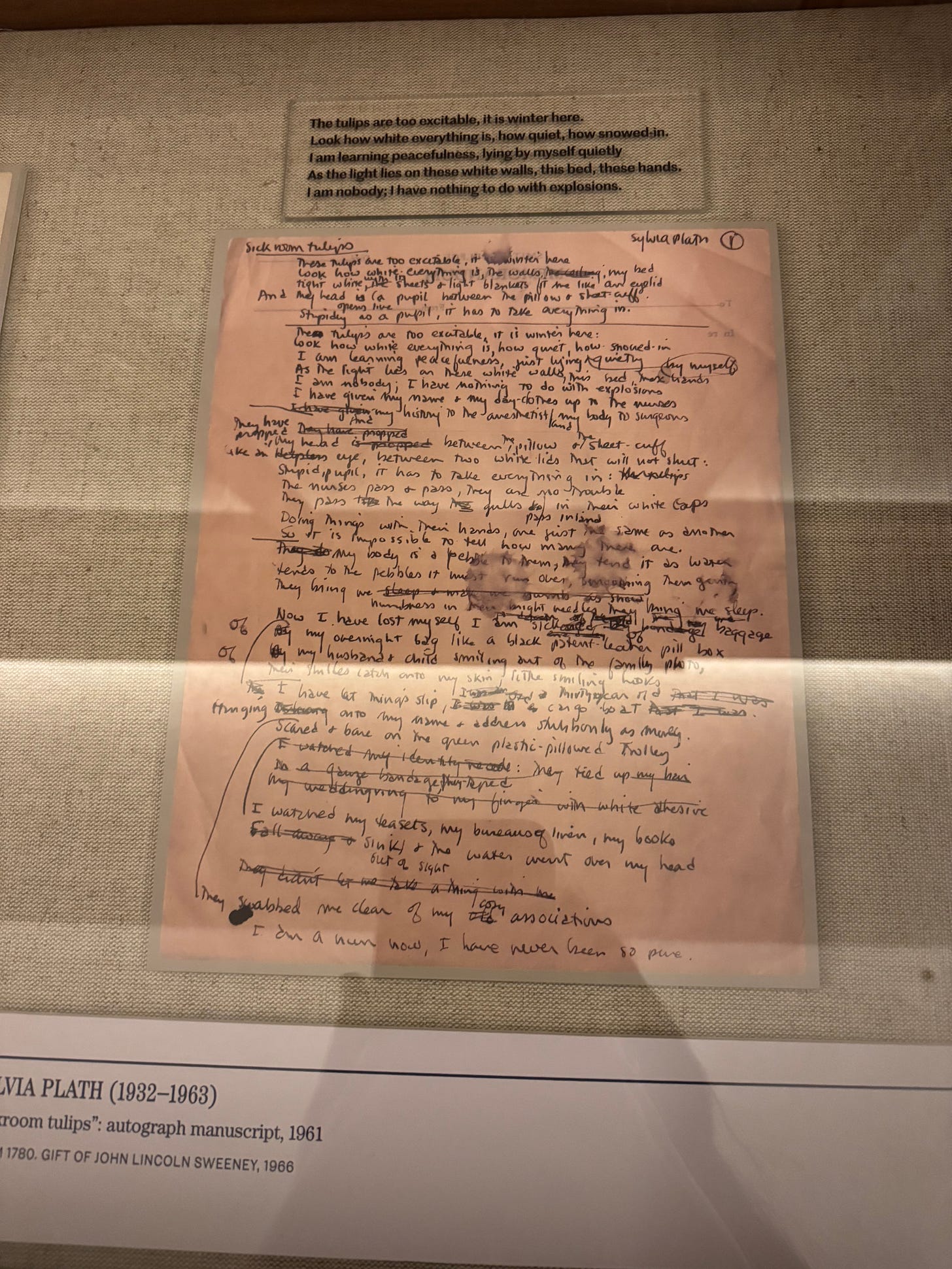

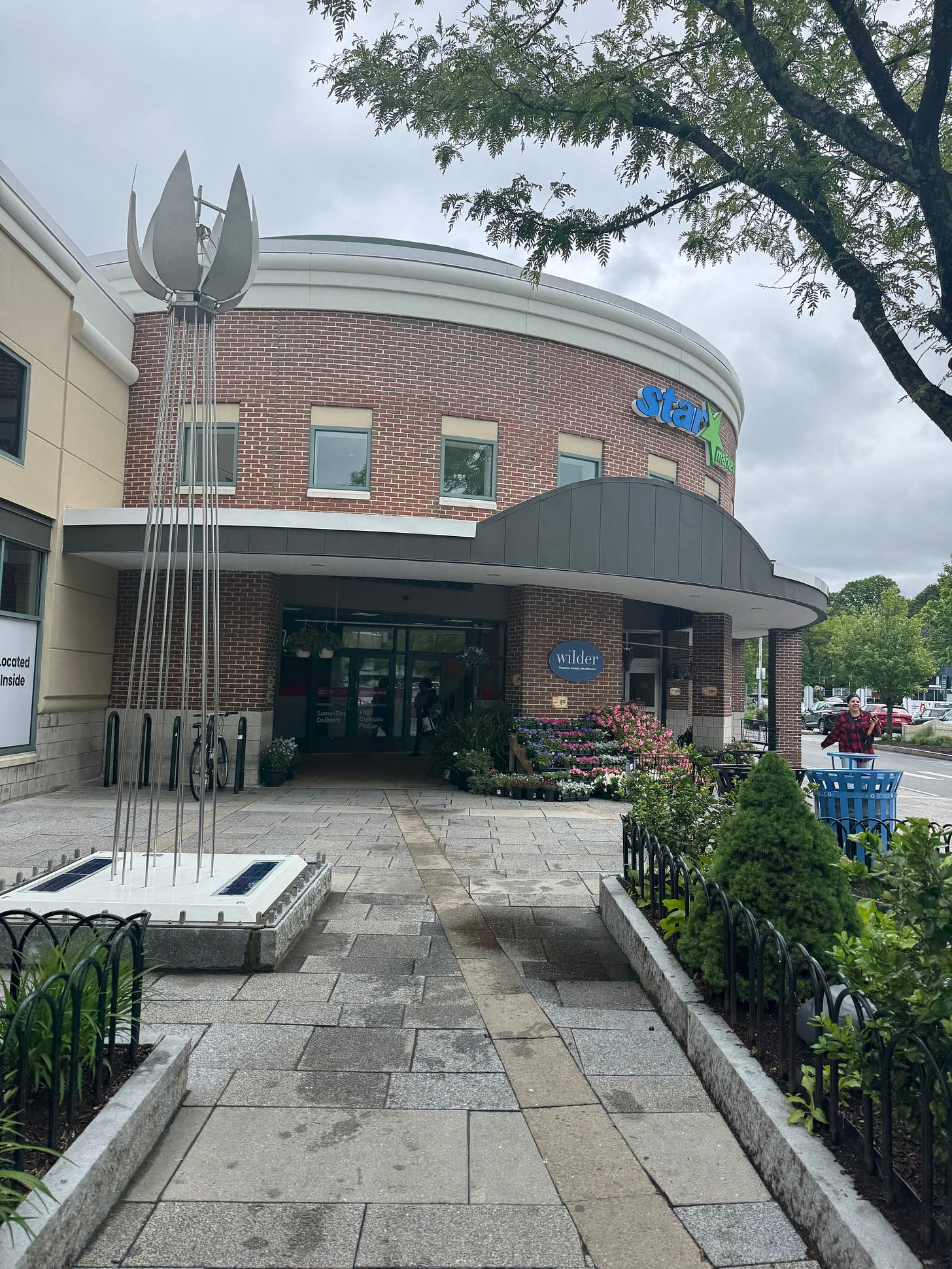
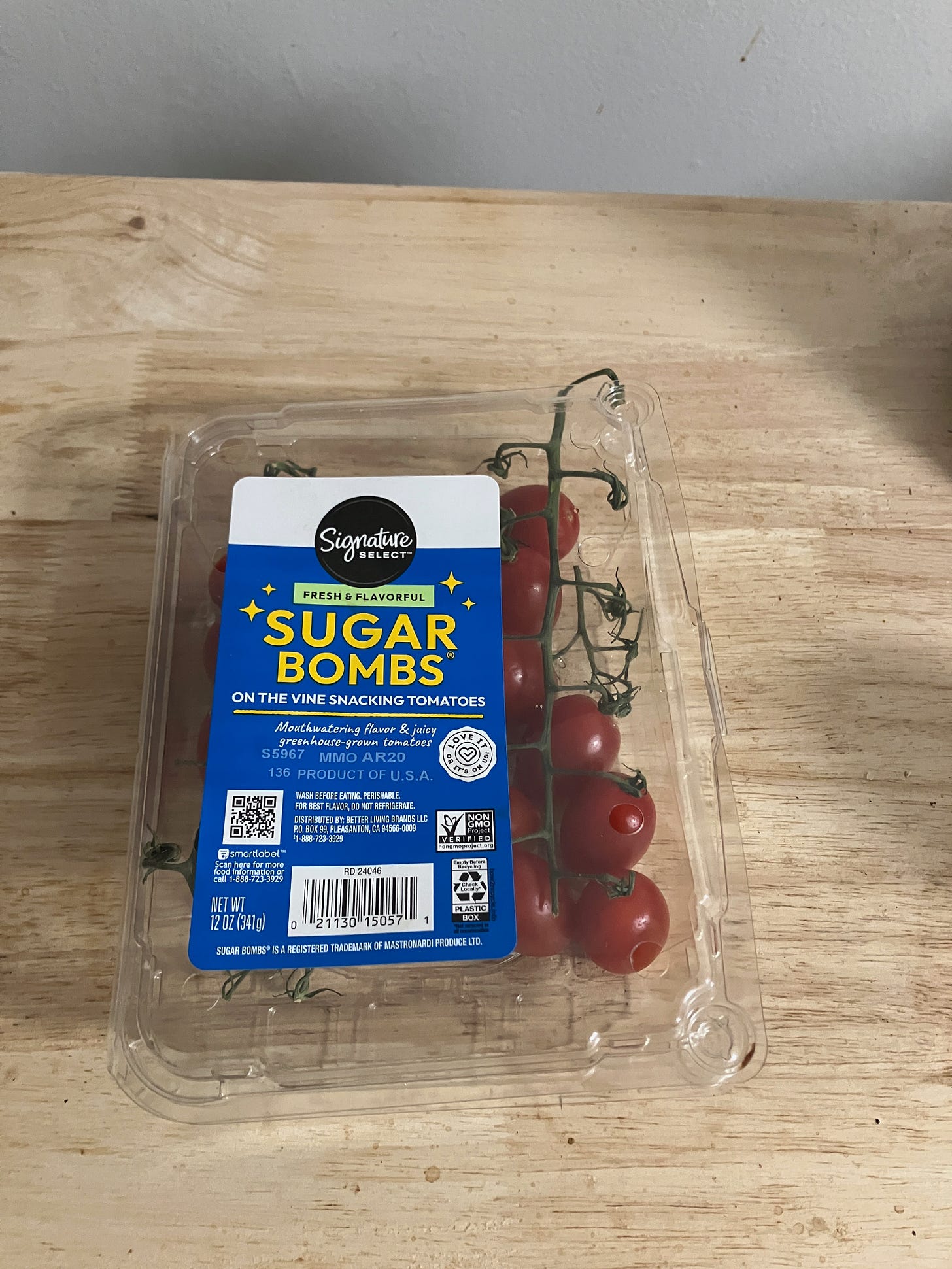
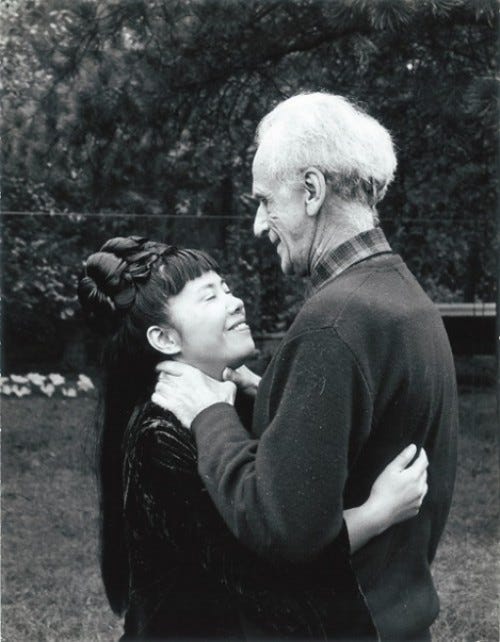
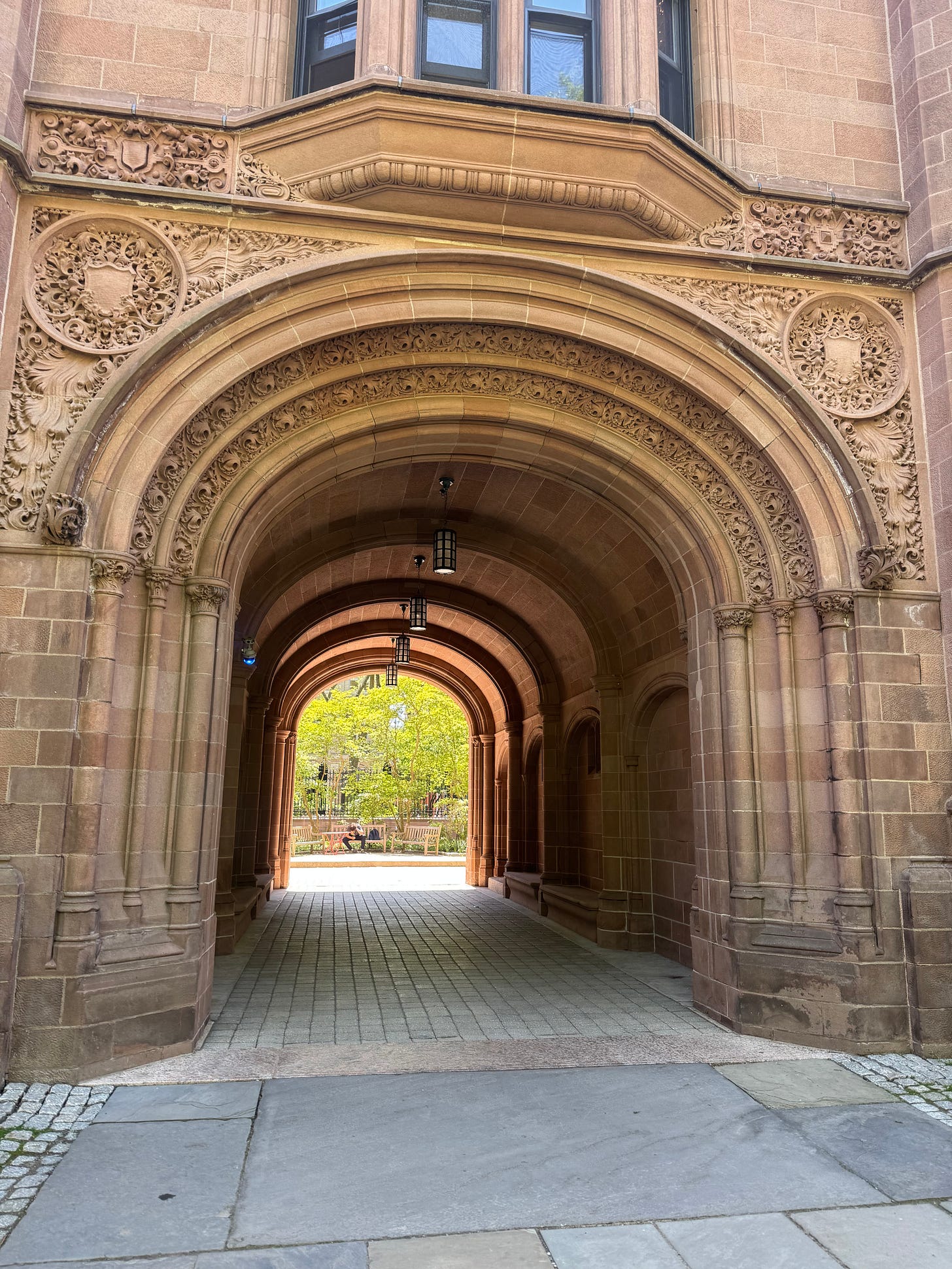
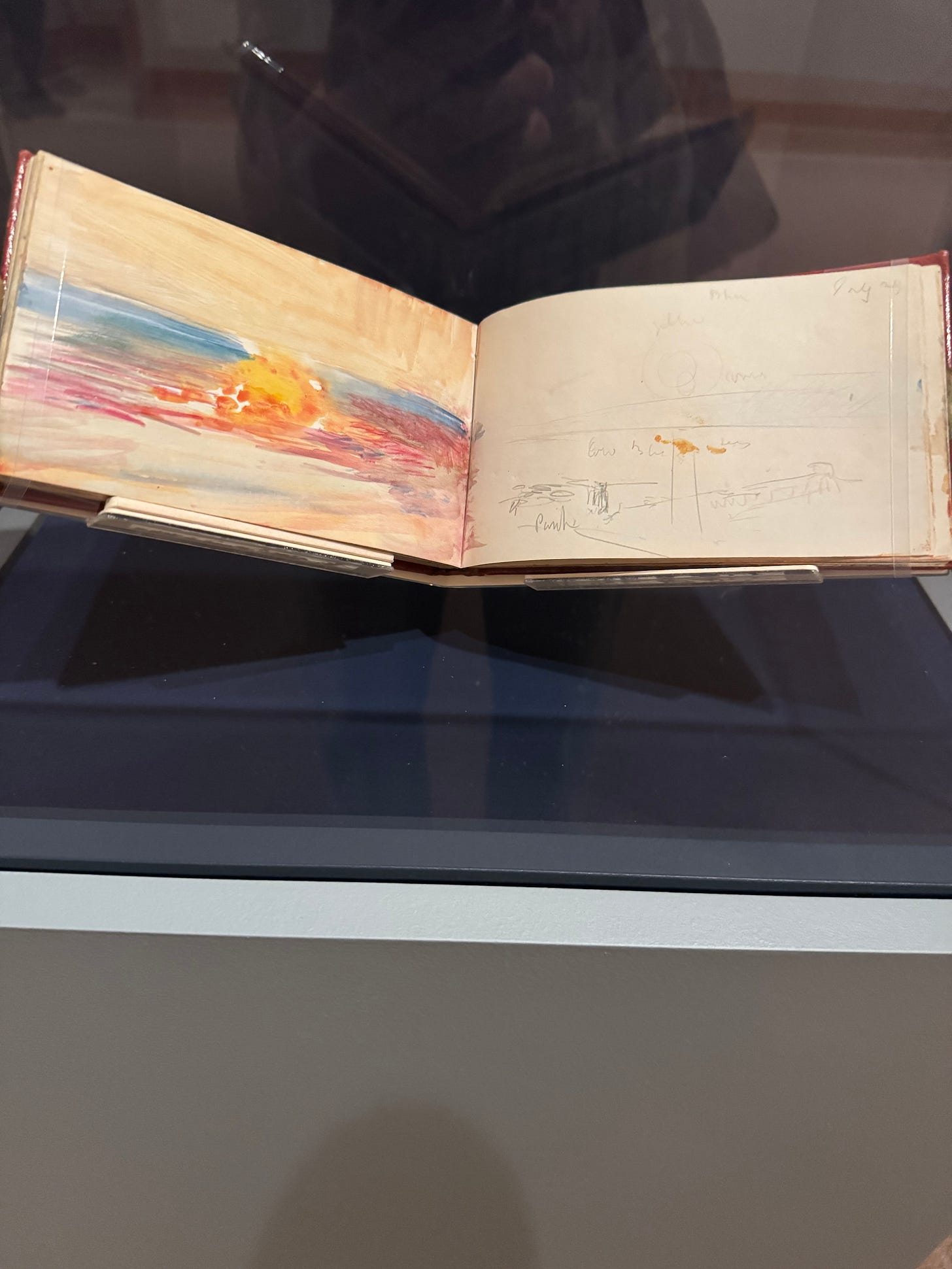
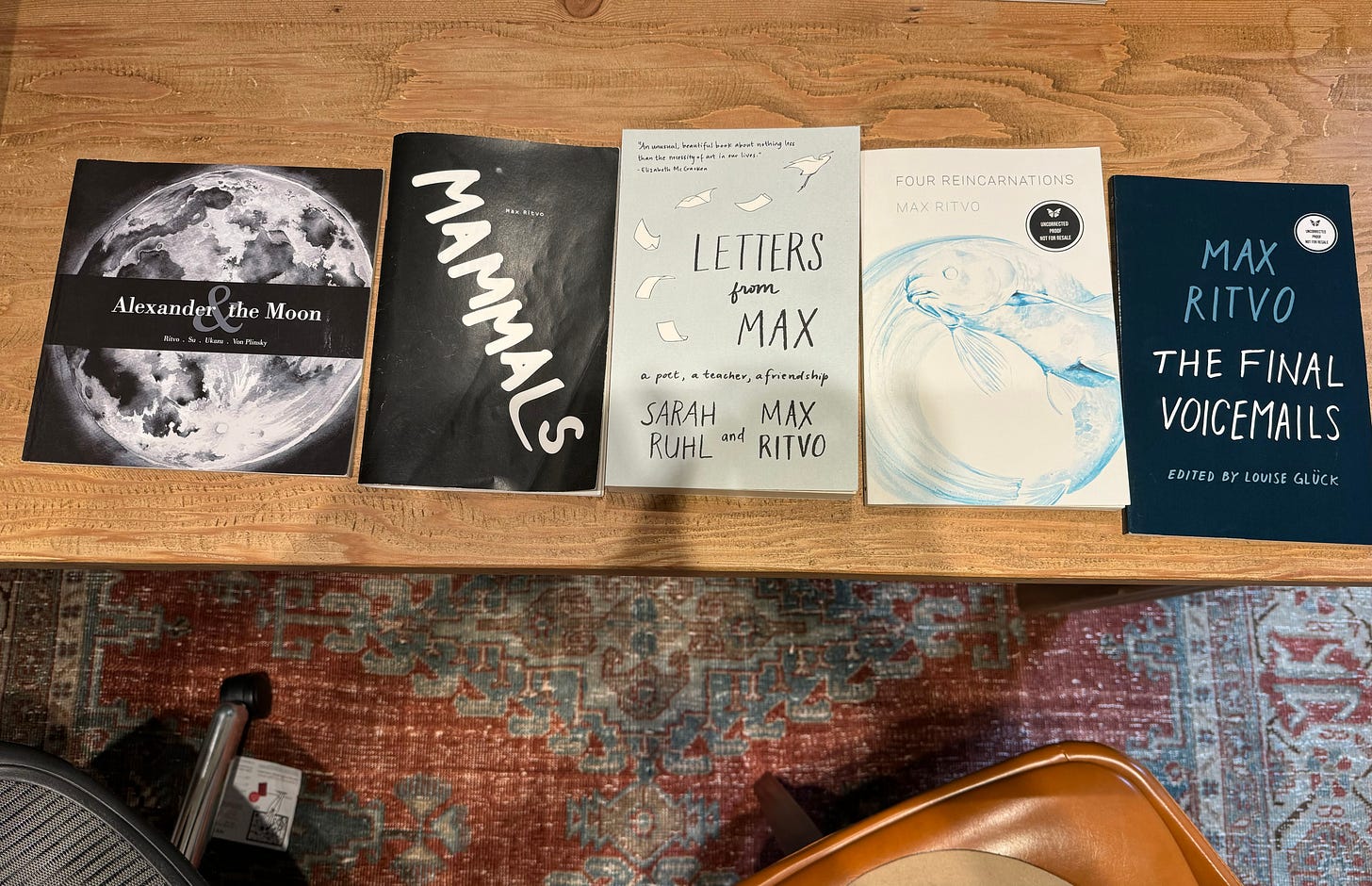
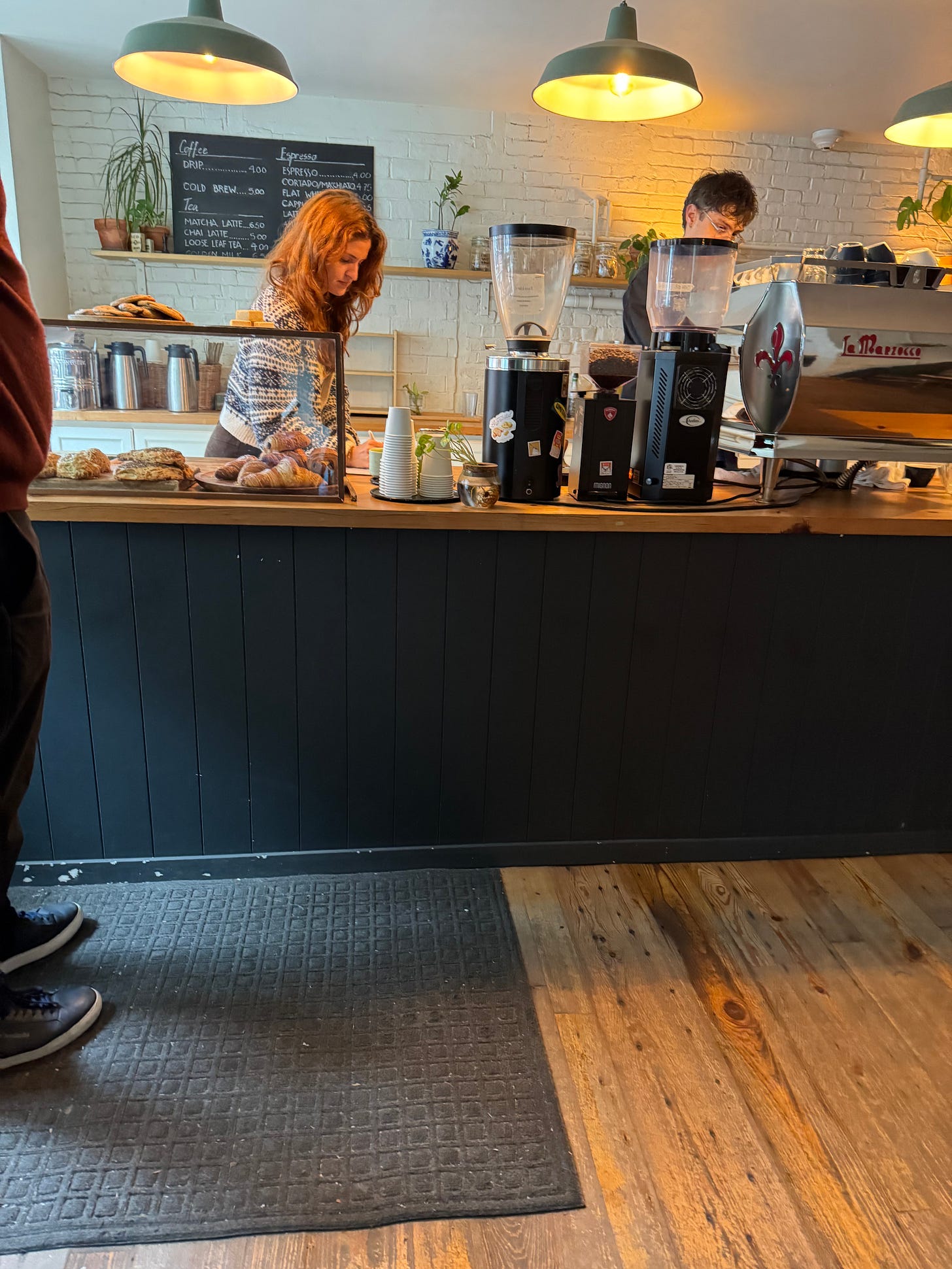
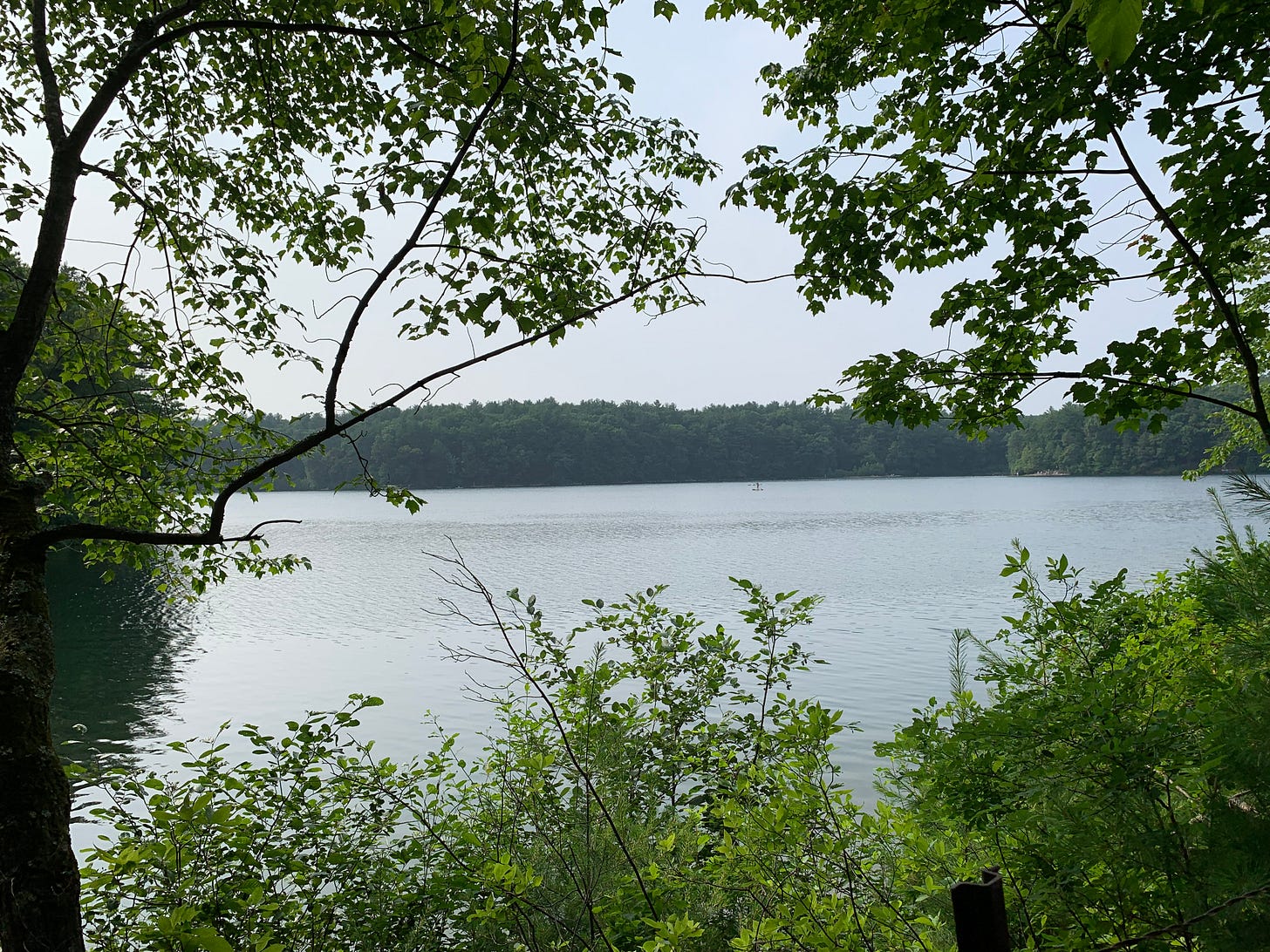
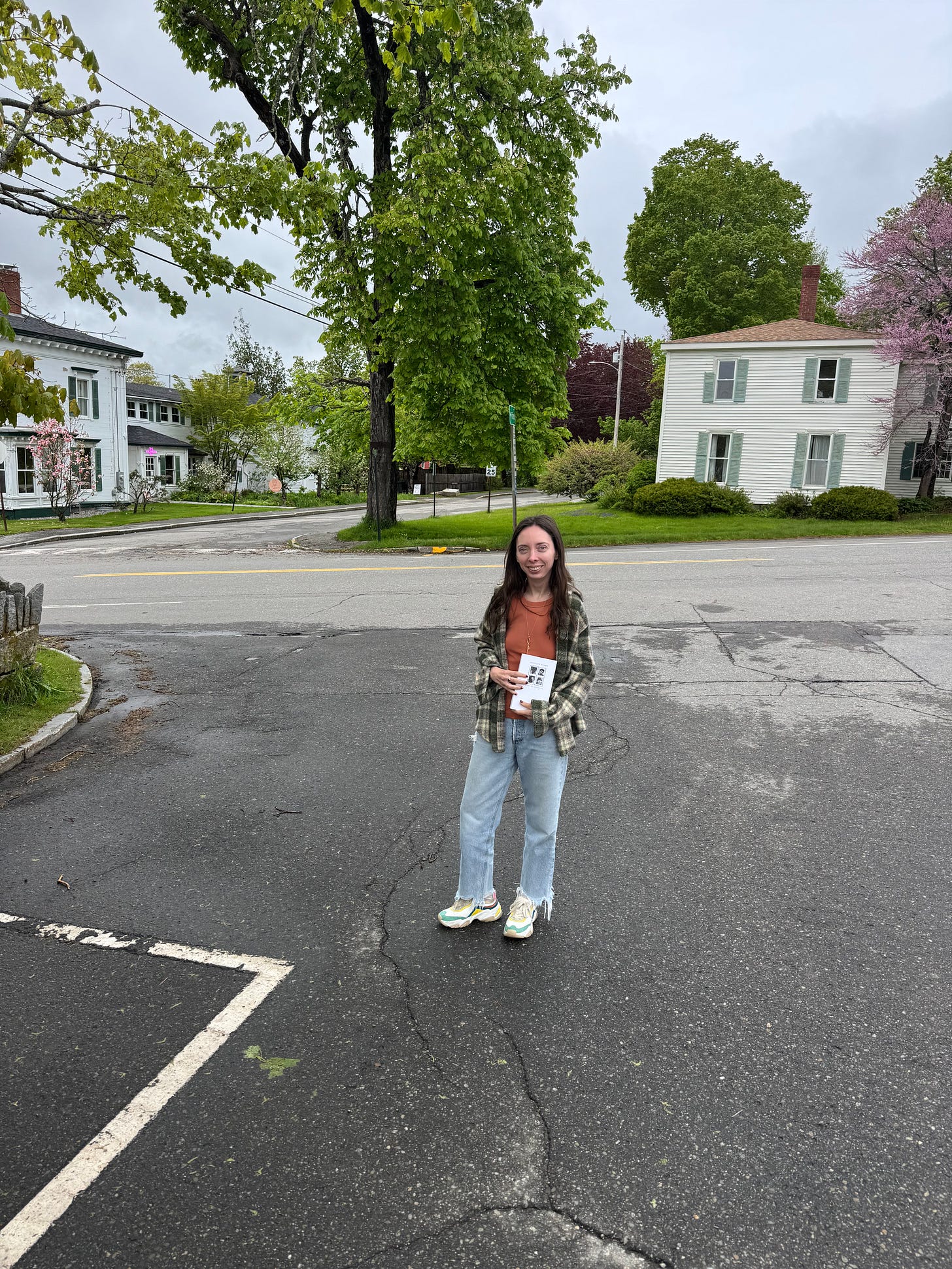
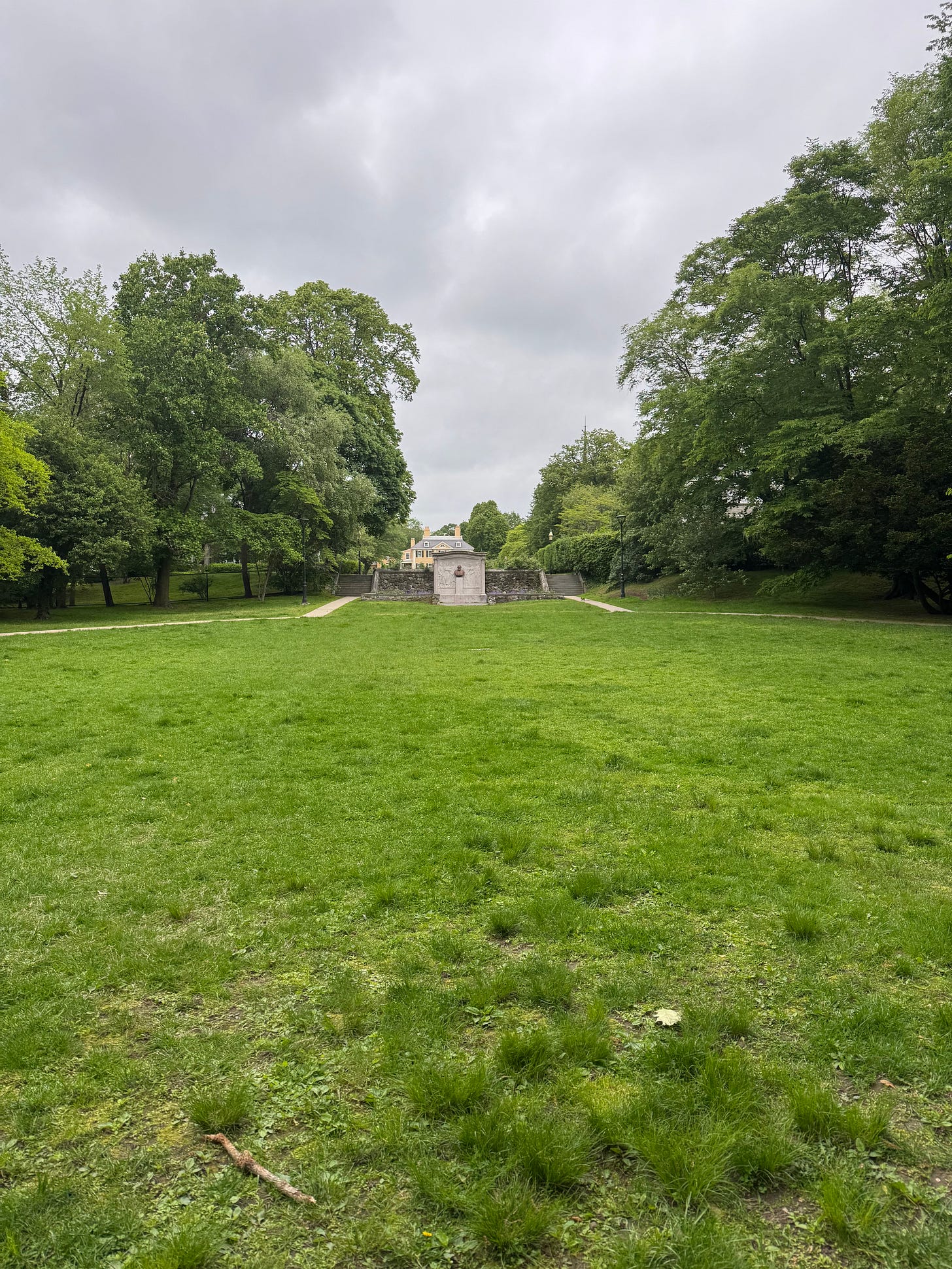


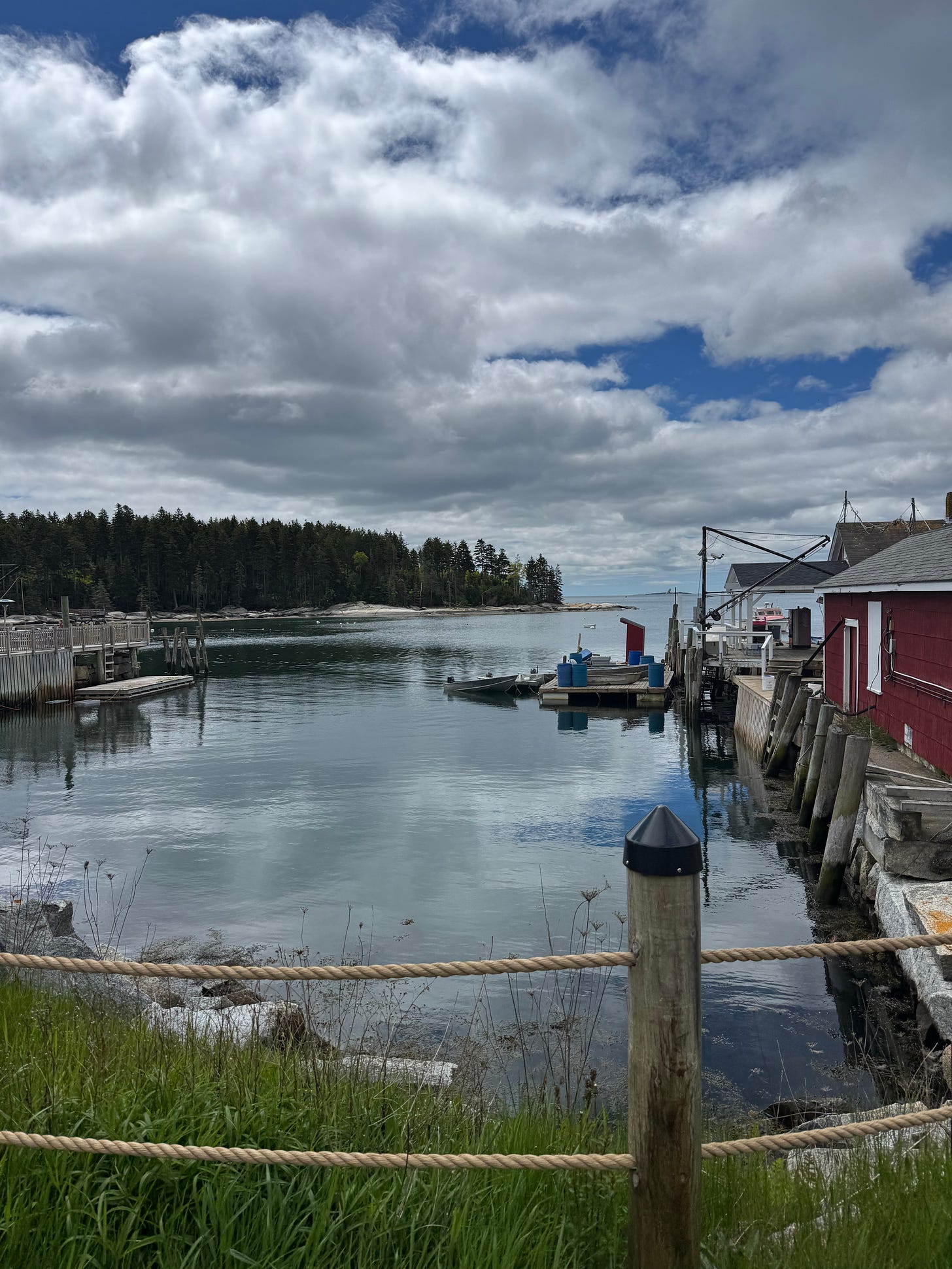
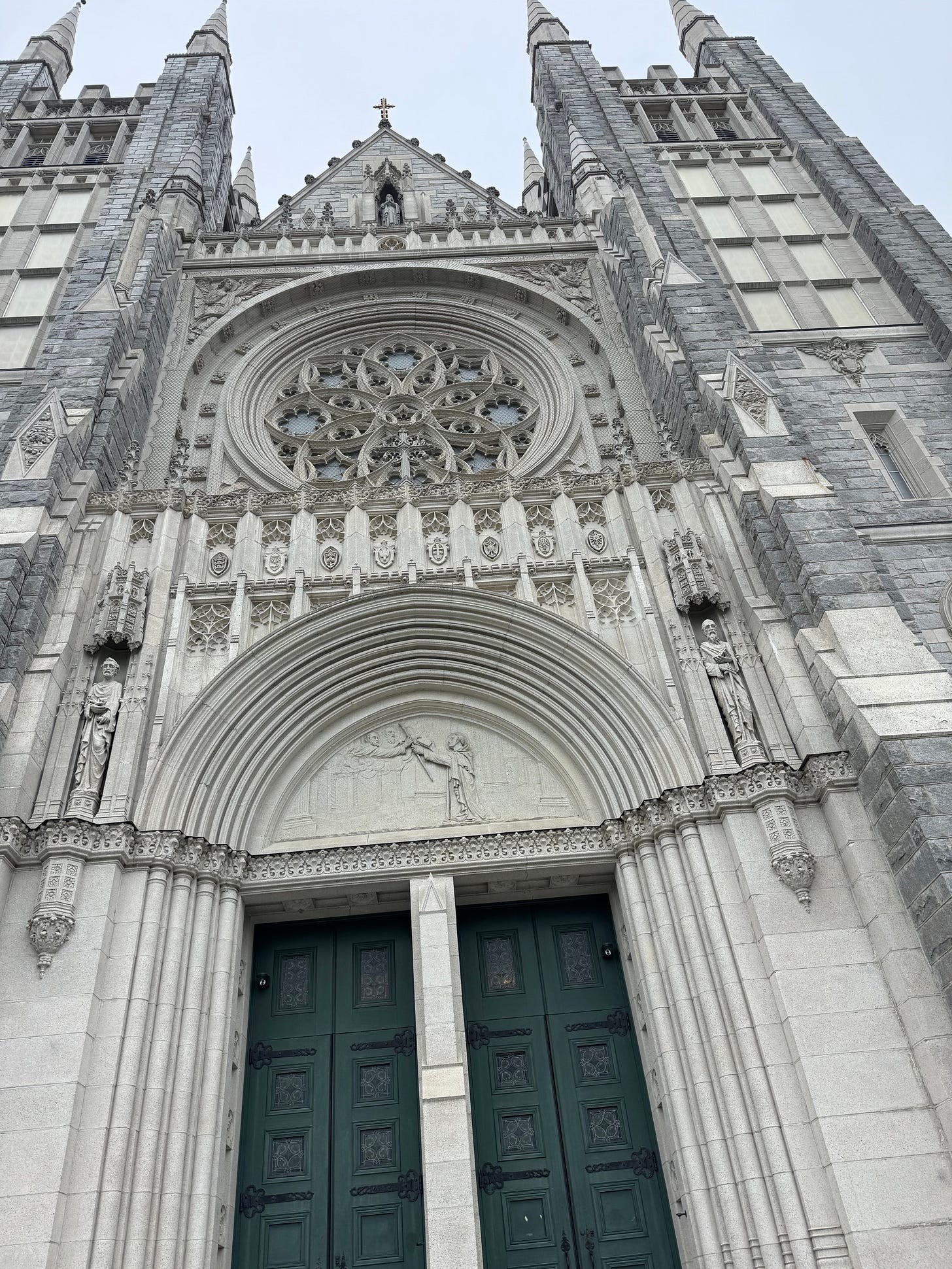
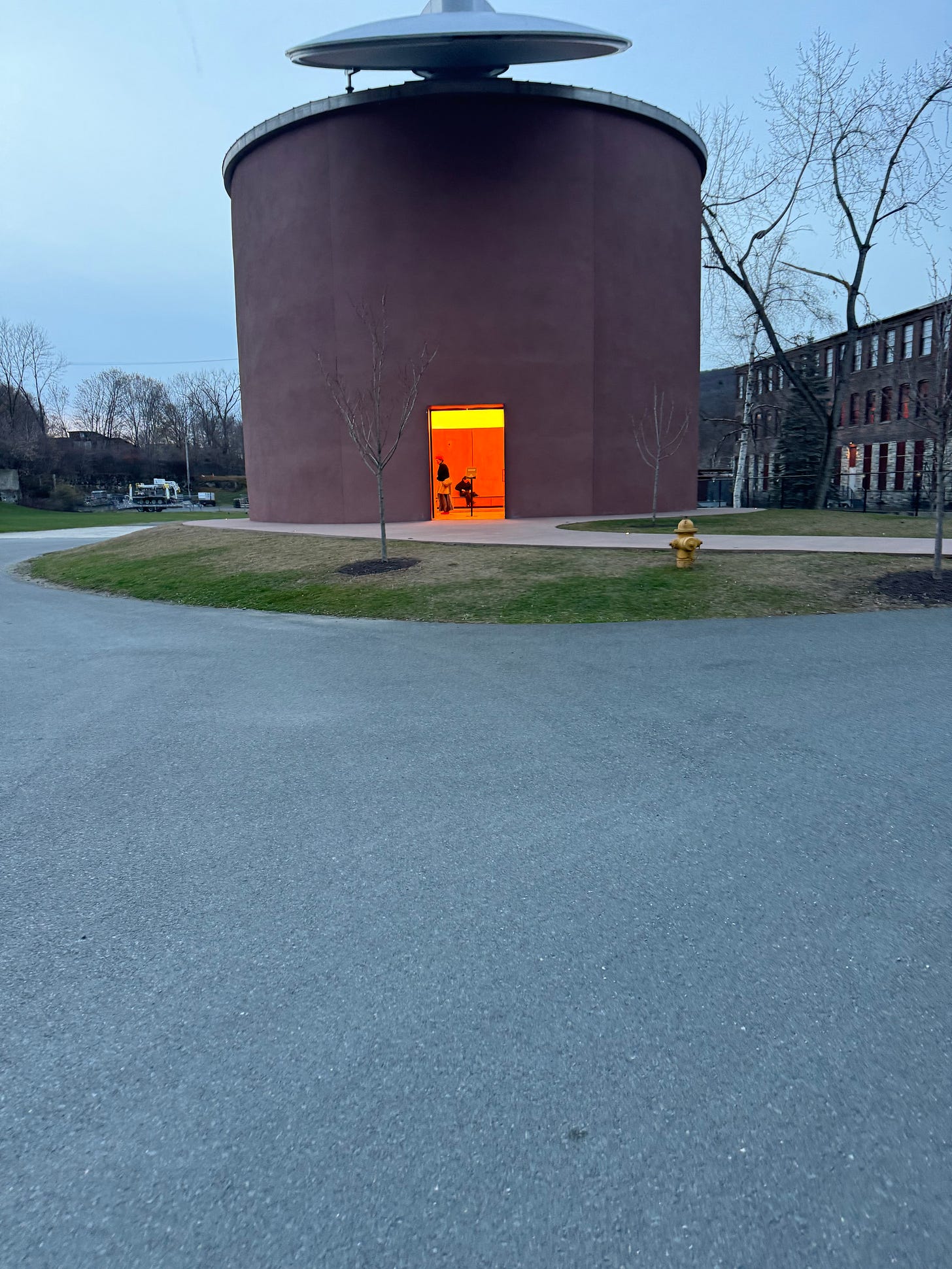
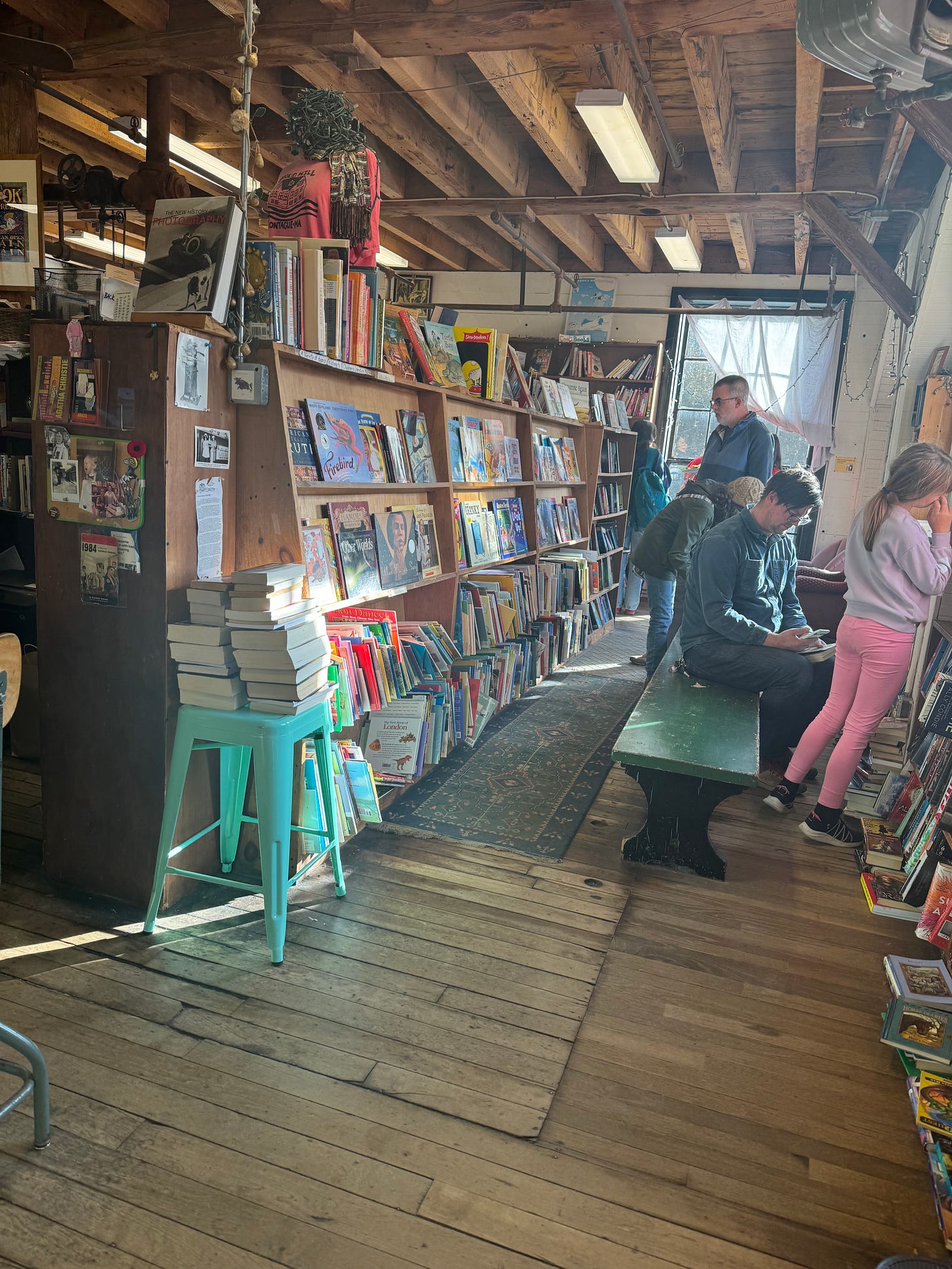
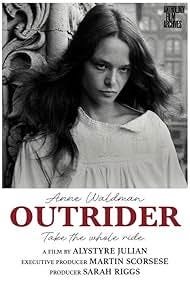
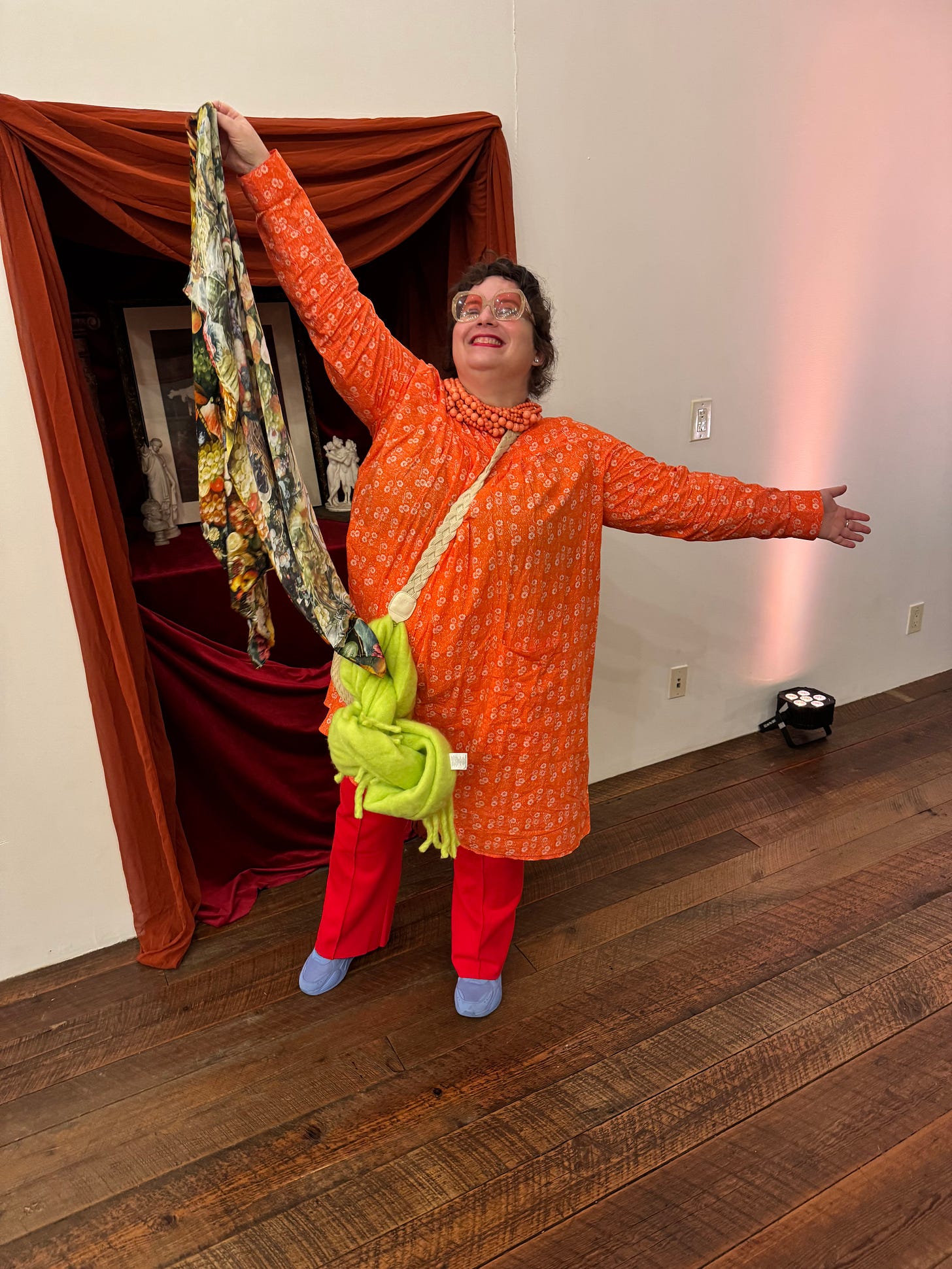
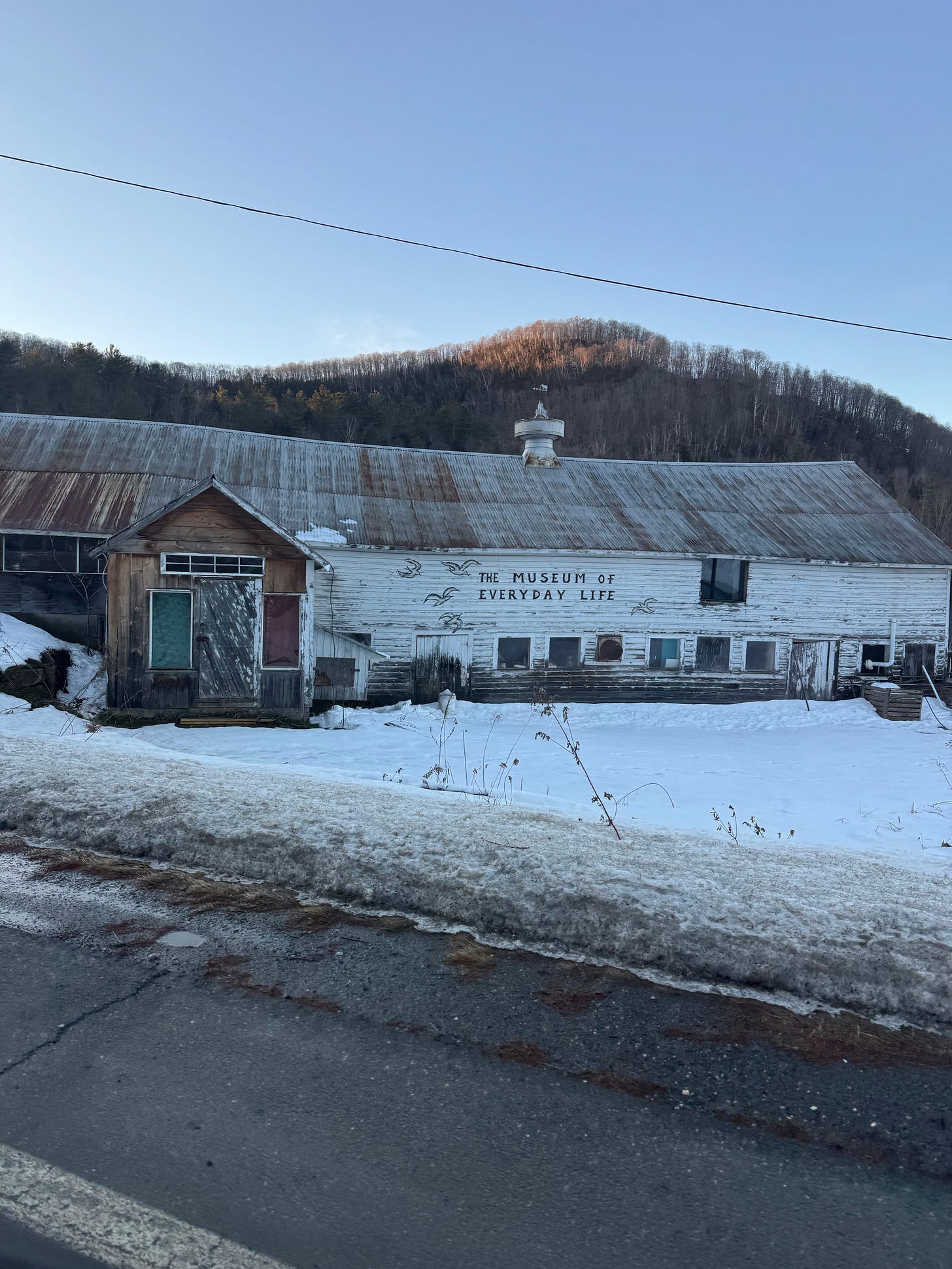
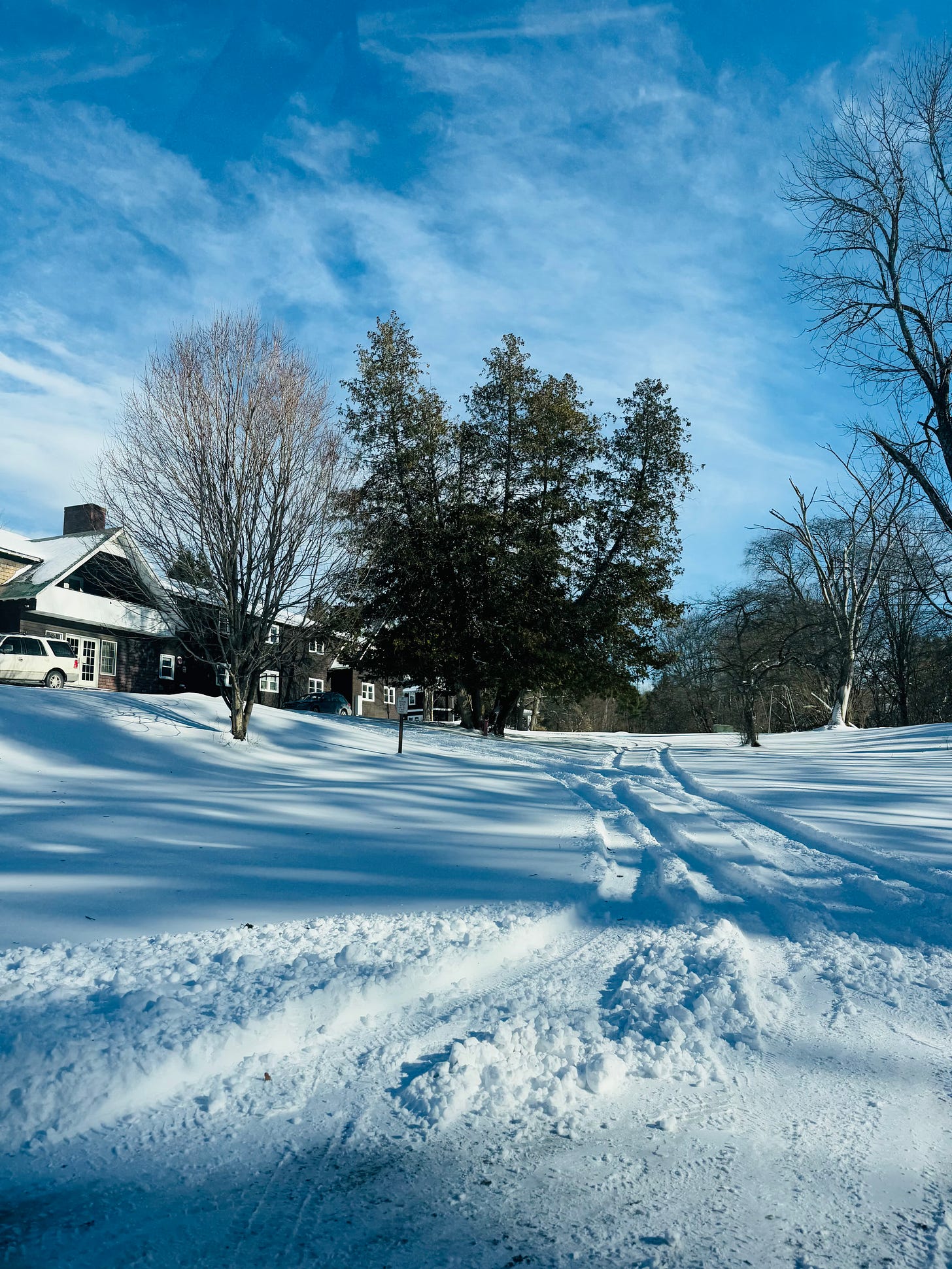
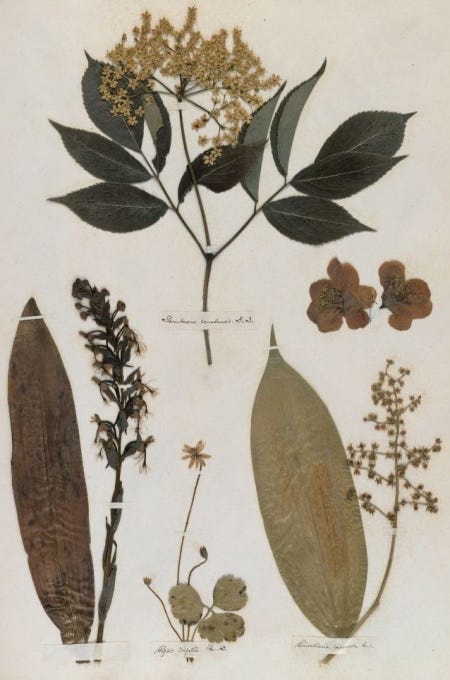
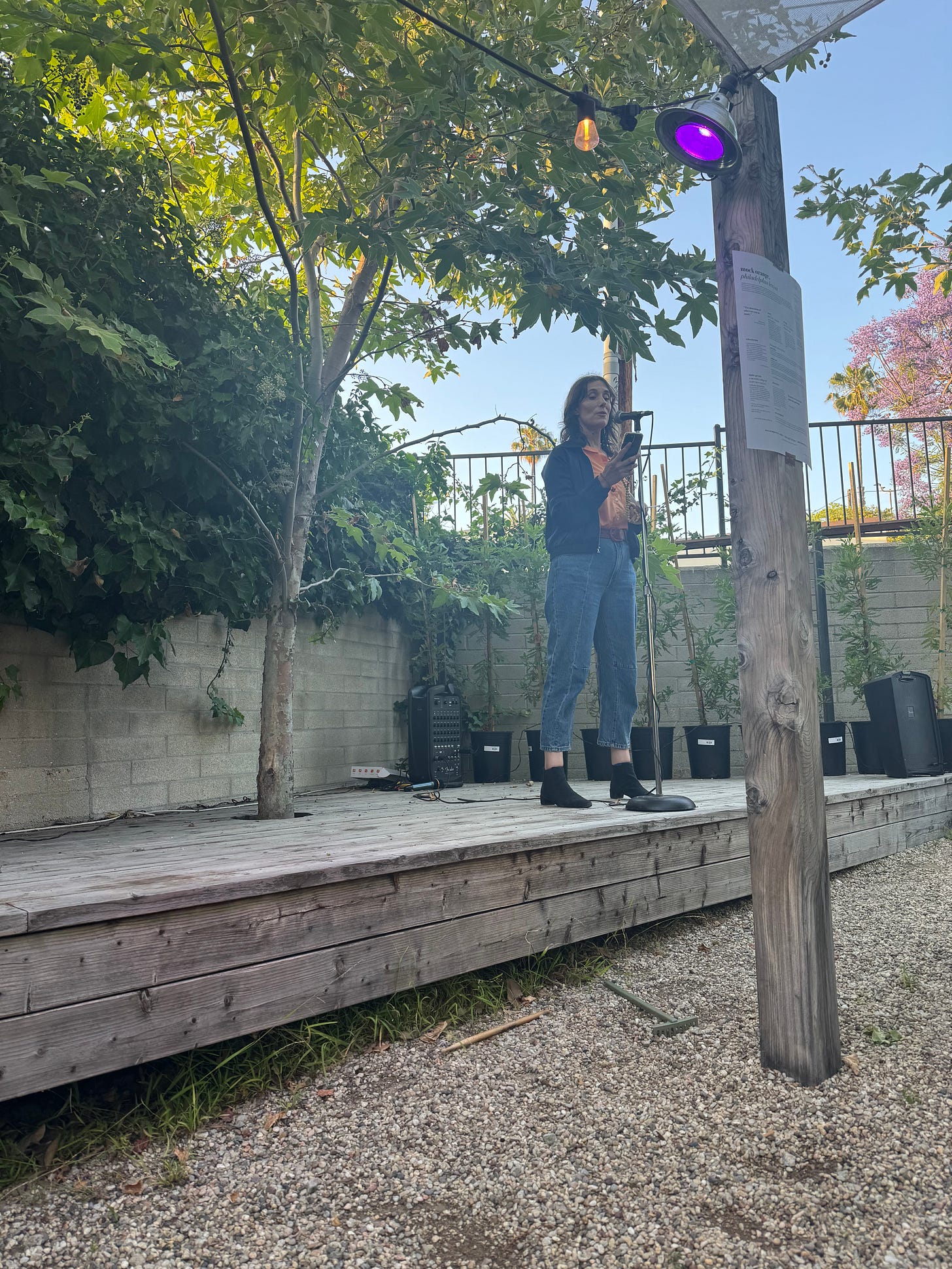
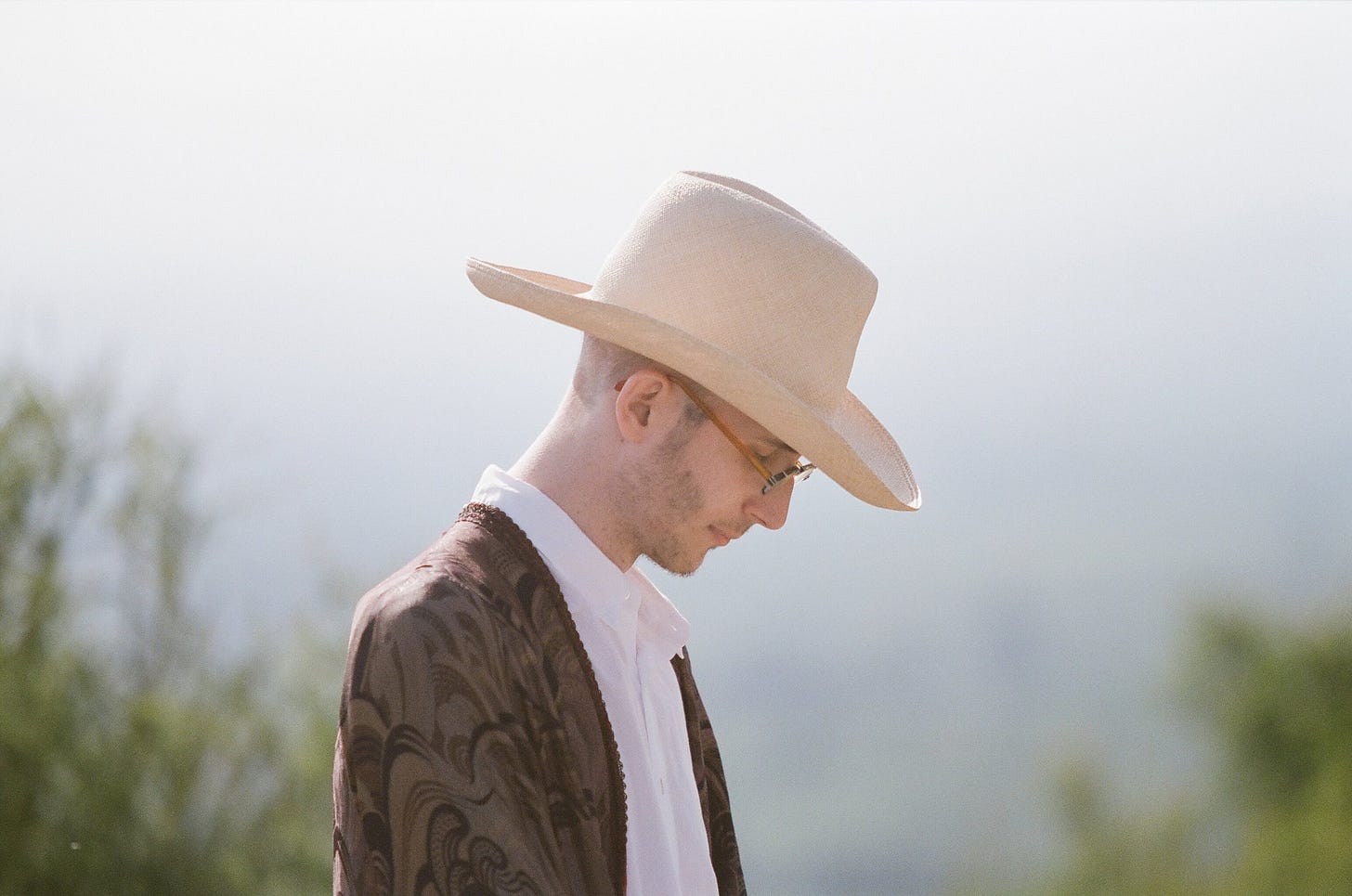
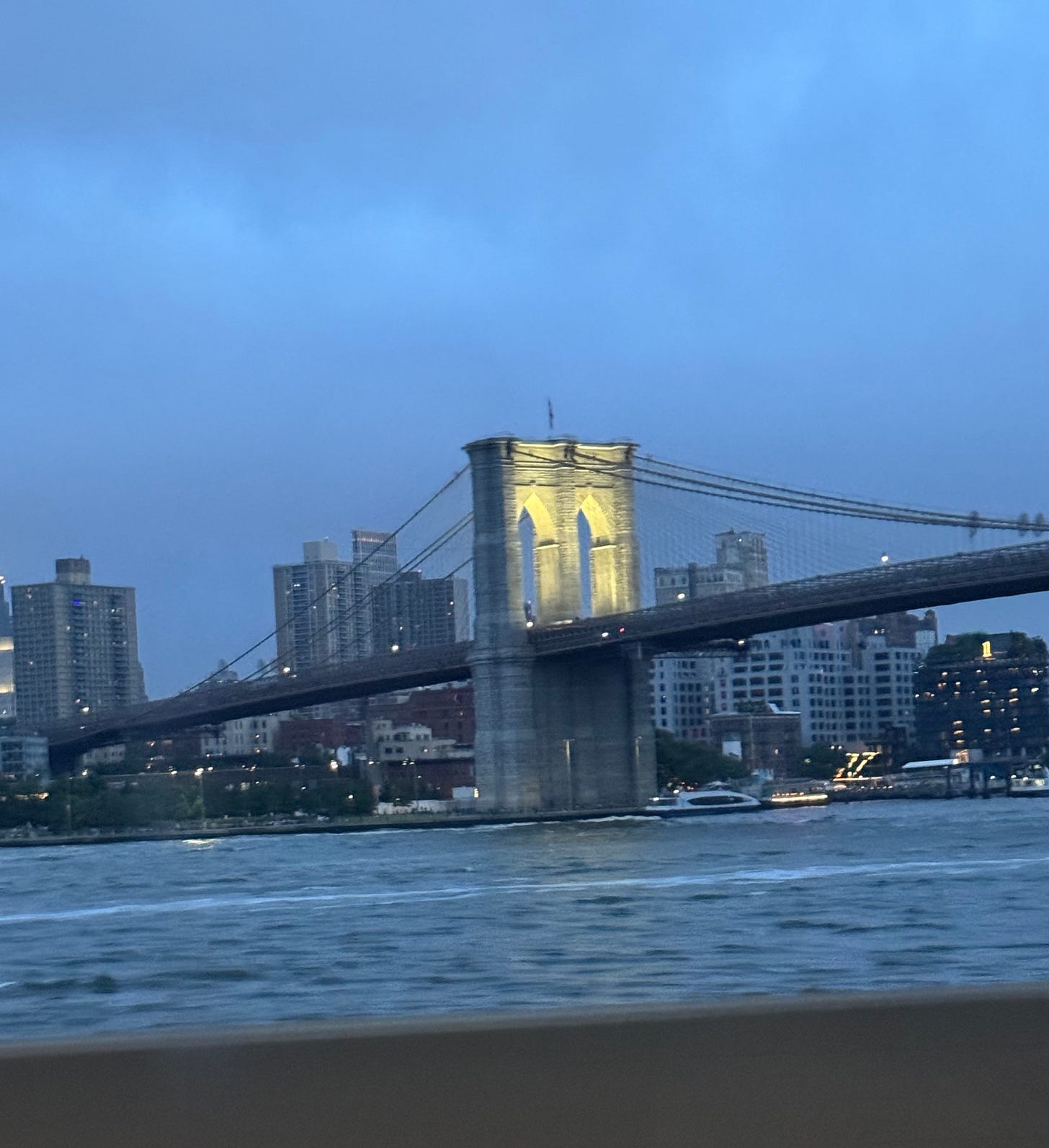
Perhaps not a daily routine but a routine of serendipity is that I've been slowly teaching myself to whistle. While I'm still not terribly good at it, I can at least handle a tune. Now I walk places whistling poems I dare not to stress writing down.
Beautiful, juicy newsletter. Thank you Elizabeth! Are you leaving Los Angeles? I don’t think I got that memo!